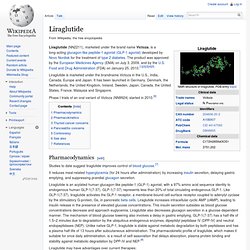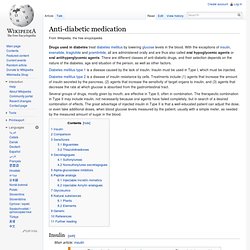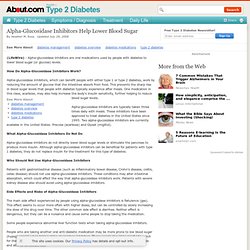

Diabetic Socks - Specialty Socks. Diabetic Socks Diabetic Socks for comfort and protection Why Diabetic Socks?

People with diabetes may develop artery disease, nerve damage, edema, foot pain, poor circulation, and various skin conditions that can severely affect the health of their legs and feet. Quality Diabetic socks can help keep your legs and feet healthy by offering the extra cushioning and protection your feet need. Our diabetic socks for men and women are available in a variety of styles, brands, colors, and lengths to meet your unique foot care needs. LowGlycemicLoad.com. How to Calculate Glycemic Load.
Whereas calculating the glycemic index requires human clinical trials, the glycemic load is a little simpler to determine.

As long as you have some key pieces of information, you can calculate the glycemic load number and then see whether that number fits into the low, medium, or high category. Doing the math The glycemic load uses a specific calculation. So as long as you know the glycemic index of a food and the grams of available carbohydrates (total carbohydrate minus fiber) in that food, you can figure out that food's glycemic load. Here's the calculation: Glycemic Index Chart, GI Chart,GI Calculator, Glycemic Load(GL) Estimated Glycemic Load™ Nutrition Data's Estimated Glycemic Load (eGL)™ predicts a food's Glycemic Load, even when its Glycemic Index is unknown.

Understanding Glycemic Load The Glycemic Load is the most practical way to apply the Glycemic Index to dieting, and is easily calculated by multiplying a food's Glycemic Index (as a percentage) by the number of net carbohydrates in a given serving. Glycemic Load gives a relative indication of how much that serving of food is likely to increase your blood-sugar levels. GL = GI/100 x Net Carbs(Net Carbs are equal to the Total Carbohydrates minus Dietary Fiber) As a rule of thumb, most nutritional experts consider Glycemic Loads below 10 to be "low," and Glycemic Loads above 20 to be "high. " Glycemic Index and Glycemic Load. This is the definitive table for both the glycemic index and the glycemic load.

I am able to reproduce it here courtesy of the author, Professor Jennie Brand-Miller of the University of Sydney. It is based on a table in different format but no more foods published December 2008 in Diabetes Care. However, only the abstract is free online there. GI of 55 is low; GL of 10 is low. This table includes the glycemic index and glycemic load of more than 2,480 individual food items. Pramlintide. Pramlintide (Symlin) is a relatively new adjunct for diabetes (both type 1 and 2), developed by Amylin Pharmaceuticals (now a wholly owned subsidiary of AstraZeneca).[1] Pramlintide is delivered as an acetate salt.

Pharmacology[edit] Pramlintide is an analogue of amylin, a small peptide hormone that is released into the bloodstream by the β-cells of the pancreas along with insulin, after a meal.[2] Like insulin, amylin is completely absent in individuals with Type I diabetes.[3] Reduction in glycated hemoglobin and weight loss have been shown in insulin-treated patients with type 2 diabetes taking pramlintide as an adjunctive therapy.[4] By augmenting endogenous amylin, pramlintide aids in the absorption of glucose by slowing gastric emptying, promoting satiety via hypothalamic receptors (different receptors than for GLP-1), and inhibiting inappropriate secretion of glucagon, a catabolic hormone that opposes the effects of insulin and amylin. Approval[edit] Liraglutide. Liraglutide (NN2211), marketed under the brand name Victoza, is a long-acting glucagon-like peptide-1 agonist (GLP-1 agonist) developed by Novo Nordisk for the treatment of type 2 diabetes.

The product was approved by the European Medicines Agency (EMA) on July 3, 2009, and by the U.S. Food and Drug Administration (FDA) on January 25, 2010.[1][2][3][4][5] Liraglutide is marketed under the brandname Victoza in the U.S., India, Canada, Europe and Japan. Exenatide. Exenatide (INN, marketed as Byetta, Bydureon) is a glucagon-like peptide-1 agonist (GLP-1 agonist) medication, belonging to the group of incretin mimetics, approved in April 2005 for the treatment of diabetes mellitus type 2.

Exenatide in its Byetta form is administered as a subcutaneous injection (under the skin) of the abdomen, thigh, or arm, any time within the 60 minutes before the first and last meal of the day.[1] A once-weekly injection has been approved as of January 27, 2012 under the trademark Bydureon.[2] It is manufactured by Amylin Pharmaceuticals and commercialized by Astrazeneca. Chemistry and pharmacology[edit] Exenatide is a synthetic version of exendin-4, a hormone found in the saliva of the Gila monster that was first isolated by Dr. John Eng in 1992 while working at the Veterans Administration Medical Center in the Bronx, New York. Exenatide is a 39-amino-acid peptide, an insulin secretagogue, with glucoregulatory effects.
Mechanism of action[edit] Anti-diabetic medication. Drugs used in diabetes treat diabetes mellitus by lowering glucose levels in the blood.

With the exceptions of insulin, exenatide, liraglutide and pramlintide, all are administered orally and are thus also called oral hypoglycemic agents or oral antihyperglycemic agents. Alpha-Glucosidase Inhibitors and Blood Sugar - Alpha-Glucosidase Inhibitors Help Lower Blood Sugar. (LifeWire) - Alpha-glucosidase inhibitors are oral medications used by people with diabetes to lower blood sugar (or glucose) levels.

How Do Alpha-Glucosidase Inhibitors Work? Alpha-glucosidase inhibitors, which can benefit people with either type 1 or type 2 diabetes, work by reducing the amount of glucose that the intestines absorb from food. This prevents the sharp rise in blood sugar levels that people with diabetes typically experience after meals. One medication in this class, acarbose, may also help increase the body's insulin sensitivity, further helping to reduce blood sugar levels. Alpha-glucosidase inhibitors are typically taken three times daily with meals. Alpha-Glucosidase Inhibitors (Page 1) Alpha-glucosidase inhibitors and lipase inhibitors for treatment of diabetes mellitus. Diabetes Treatment Symptoms, Causes, Treatment - Sulfonylureas on MedicineNet. Medications that increase the insulin output by the pancreas - sulfonylureas and meglitinides Sulfonylureas.

Type 2s on Sulfonylureas Less Likely to Take Anti-Depressants. Type 2 patients who use only a sulfonylurea are less likely to take anti-depressant drugs than diabetes patients on other medications. That's the conclusion of a report delivered recently in Honolulu at the annual meeting of the American Psychiatric Association. The report, which summarized a retrospective study by a Norwegian researcher, said that diabetes patients taking a sulfonylurea as their only disease medication had the lowest likelihood of also being prescribed an antidepressant.
The researcher, Øivind Hundal, MPharm, PhD, of Haukeland University Hospital in Bergen, theorized that the insulin-inducing properties of sulfonylureas may have an antidepressant effect on the brain, thus doing away with the need for other antidepressants. Hundal had previously theorized that depression might be a form of "diabetes of the brain," in which high cerebral glucose levels affect brain function and moods. ORAL HYPOGLYCEMIC DRUGS. Thomas Higgins, M.D. Oral hypoglycemic drugs are used only in the treatment of type 2 diabetes which is a disorder involving resistance to secreted insulin. Type 1 diabetes involves a lack of insulin and requires insulin for treatment. There are now four classes of hypoglycemic drugs: Sulfonylureas Metformin Thiazolidinediones Alpha-glucosidase inhibitors. These drugs are approved for use only in patients with type 2 diabetes and are used in patients who have not responded to diet, weight reduction, and exercise.
Diabetesnet.com. Sulfonylureas, the first drug group introduced into the U.S. in 1955, stimulates the beta cells to produce more insulin. These drugs have kept many Type 2’s off injected insulin. Sulfonylureas will not work in those with Type 1 diabetes (except for a specific type) nor in anyone with Type 2 whose beta cells no longer produce insulin. MODY: An Insulin Sensitive Form Of Monogenic Diabetes Often Misdiagnosed As Type 2. Advertisement MODY: An Insulin Sensitive Form Of Monogenic Diabetes Often Misdiagnosed As Type 2 Janet Ruhl, Type 2 1998-2006, MODY 2006-2007 NIH statistics reveal that almost 20% of all people diagnosed with Type 2 diabetes are not overweight. Some of these people have little or no response to the drugs that lower insulin resistance like metformin or Actos.
And while some of these people can control their blood sugar with a very low carb diet, others find that even when they eat very few grams of carbohydrate their blood sugars remain significantly higher than normal. Insulin Pump Calculator. Insulin pump calculator The Initial Insulin Pump Requirements calculator estimates the initial insulin requirements for when you first use your insulin pump. Before starting to use an inulin pump, patients should be instructed on how best to operate a pump by their healthcare professional. As well as pump operation, patients need instruction in how to insert and care for their infusion set, and how to deal with any problems. The Insulin Pump Forum on the Diabetes Forum is a great resource for helping with this.
Usually, the insulin pump will require around 80 per cent of the insulin requirement before beginning pump therapy. 50% of the insulin is given at the basal rate, whilst the other 50% if divided into three premeal boluses. The initial insulin dose calculator will help patients to estimate their initial insulin requirements. The insulin injection port takes the shots for you. IOH Symptoms, Information Maturity Onset Diabetes of the Young (MODY) Back to main Medical Information pageDiabetes Information Maturity Onset Diabetes of the Young (MODY)Symptoms, Causes, Diagnosis, Treatment, and Management.
Providing information for patients and professionals on research and clinical care in genetic types of diabetes. Maturity onset diabetes of the young (MODY) Slim, Touchscreen Insulin Pump Coming in 2012. Insulin pumps, which use a catheter placed just under the skin, are ideal for people with Type I diabetes because they allow them to match insulin levels to their lifestyle without injections. However, only a small percentage of diabetics use them. Insulin pumps are often bulky, inconvenient and fit more in a hospital setting than on a person 24/7. Tandem Diabetes Care - Type 1 diabetes explained.
THE BOOK OF BETTER by Chuck Eichten. What is Type 1 Diabetes? The Faustman Lab at Mass General. Dr. Faustman's BCG Trial info movie. Denise Faustman: To Stop Diabetes, She's Attacking the Immune System. Her name draws sparks. Critical scientists question her methods and challenge her findings. Interview with Denise Faustman. Untitled. Web: Nanoparticle Vaccine Use in Mice. Nanoparticle vaccine cures type 1 diabetes in mice. According to the American Diabetes Association around one in every 400 to 600 children and adolescents has type 1 diabetes – also known as IDDM, or juvenile diabetes. Currently there is no known way to prevent the disease which requires sufferers to administer insulin usually via injection or a pump.
Brain Chemical has a Role to Play in Treating Diabetes. When the human body is under stress, several naturally present chemicals are released in the body to restore calmness. Of these chemicals, few exist in the body till normalcy and the others show up for a brief period of time. Nanotech Vaccine Successfully Cures Type-1 Diabetes in Mice.
An innovative nanotech "vaccine" has been proven to cure type 1 diabetes in mice, and paves the way to do the same for humans. Helminthic therapy. Infectious Necator americanus L3 larva. Invisible to the naked eye, from 10 to 35 are applied to the skin in therapy, either in a single dose or in multiple smaller doses over the course of two or three months. Diabetes Mystery: Why Are Type 1 Cases Surging? When public health officials fret about the soaring incidence of diabetes in the U.S. and worldwide, they are generally referring to type 2 diabetes. Www.diabetesadvocacy.com/pump_coverage.htm. Children with DIABETES - Not-For-Profit Organizations. Monogenic Forms of Diabetes: Neonatal Diabetes Mellitus and Maturity-onset Diabetes of the Young.
Maturity onset diabetes of the young. Providing information for patients and professionals on research and clinical care in genetic types of diabetes. MODY - It's Not Type 1 and Not Type 2, but Something Else.